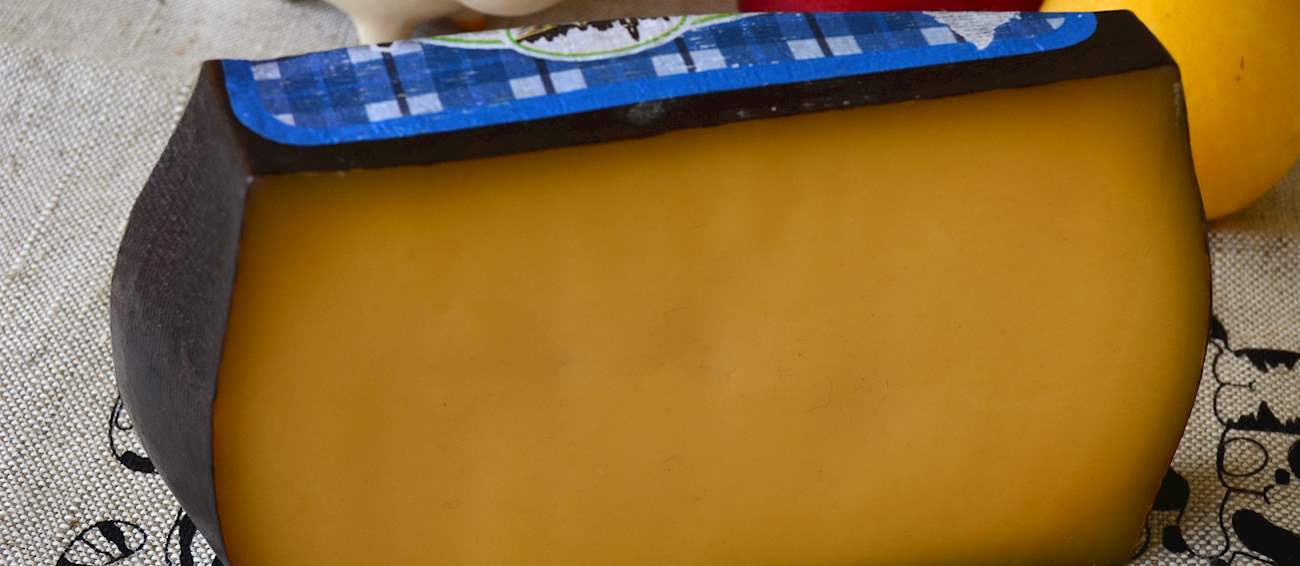Originating from the Val-Dieu Abbey in Belgium, Bouquet des Moines is a semi-soft cheese made from pasteurized cow’s milk. Underneath its bloomy white rind, it hides a delicately creamy texture. The cheese is characterized by its unusual shape, similar to an upside-down flower pot, and during the maturation period, it gradually ripens towards its center.
It can be consumed melted, grilled, or as it is from a cheese platter.
Named after the eponymous village located in East Flanders, Nazareth is a Belgian hard cheese made from cow’s milk. It is recognizable by its dark brown rind. The cheese has a subtle, mild flavor with nutty hints. It can be either grated or melted, and it is recommended to use it with pasta dishes, stews, or in grilled cheese sandwiches.
Vieux Chimay is a Belgian cheese made from cow's milk and annatto. It's shaped into a flattened ball, then left to age for 6 months. Underneath its thin golden-brown rind, the texture is semi-soft, chewy, and melts in the mouth. The flavors are buttery and slightly nutty, with a distinct, yet pleasant bitterness on the finish.
It's recommended to melt Vieux Chimay into lobster risotto and pair it with a bottle of Chimay Tripel beer.
Named after the eponymous village where it originated, Passendale is a semi-soft Belgian cheese made from cow’s milk. It is characterized by a soft and creamy texture, sweet aroma, and mild flavor. Typically round in shape, it has a natural brown rind which is lightly dusted with white mold so it looks visually reminiscent of a bread loaf.
One of the most popular cheeses of Belgium, Fromage de Herve has been produced in the Pays de Herve region since the early 1400s. It is a soft, washed rind cheese made from raw or pasteurized cow's milk. Depending on the length of maturation, Herve comes in two varieties. Le Herve Doux is a softer, sweeter cheese, matured for no longer than 4 weeks, while the refined Le Herve Piquant is matured for at least 2 months to develop its pungent aroma and a stronger, saltier flavor.
It is best paired with wholemeal breads and rich, dark beers.
Pair with
TasteAtlas food rankings are based on the ratings of the TasteAtlas audience, with a series of mechanisms that recognize real users and that ignore bot, nationalist or local patriotic ratings, and give additional value to the ratings of users that the system recognizes as knowledgeable. TasteAtlas Rankings should not be seen as the final global conclusion about food. Their purpose is to promote excellent local foods, instill pride in traditional dishes, and arouse curiosity about dishes you haven’t tried.




